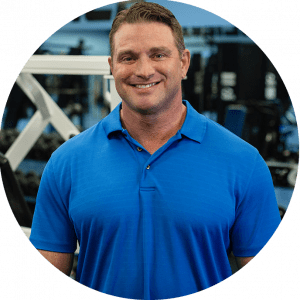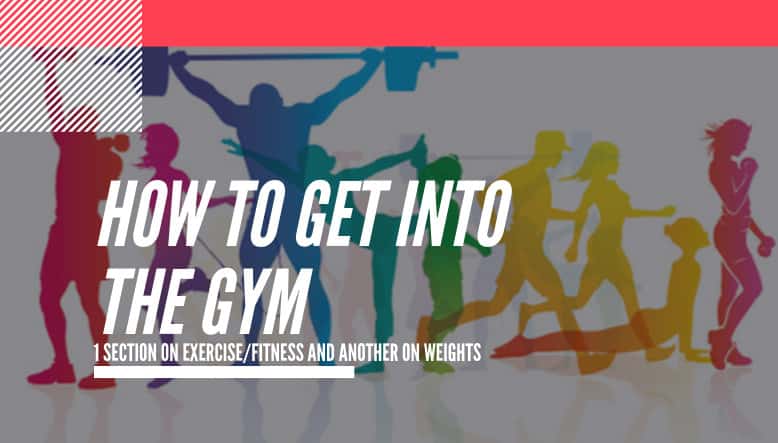
Content Quick Jump
If you’re not really into competition and just want to get or keep fit and maybe make some friends, then heading to the gym could be your best option. Gyms vary in what they offer, but the vast majority of them will provide a combination of exercise classes and machines with weights. If you’re interested in getting into gym, but not sure how to start, then keep reading and we’ll tell you everything you need to know.
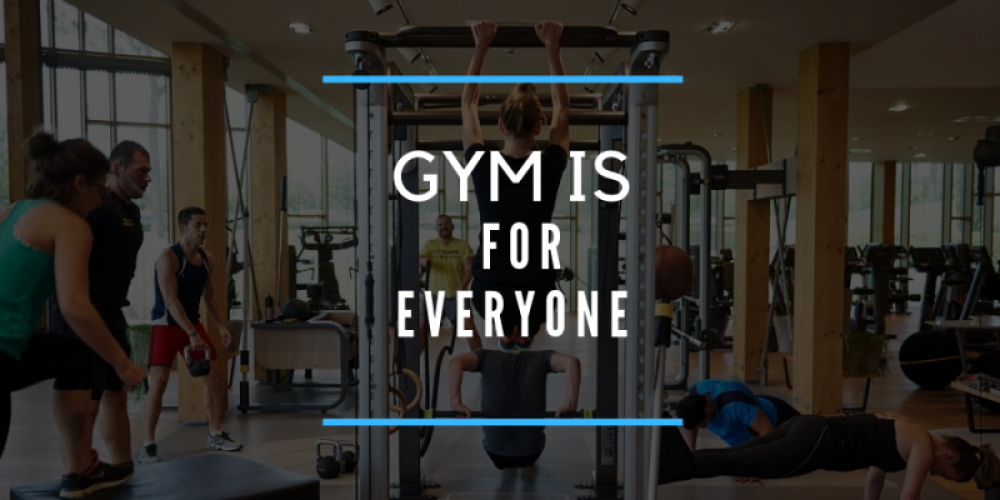
Gym is for Everyone
Some gyms may have age restrictions and a few target specific groups of people (e.g. women) but most are open to people of all ages, colours, shapes, sizes and levels of fitness. High-quality gyms will aim to create a welcoming environment to all their users, especially nervous ones. Forget any ideas about being judged, even the fittest gym goers were beginners once and most of them will be happy to help. In the unlikely event that anyone does give you any grief, just let the staff know and they’ll deal with it.
There are Gyms to Suit All Budgets
Some gyms have glitzy facilities with the poshest of toiletries in the changing rooms and ambient music playing in the public areas. Other gyms just have the basics for their users to get the job done. Obviously this will be reflected in their prices. In other words, even if you’re on a tight budget, you can still find a gym, you’ll just have to be realistic about the number of nice extras you can get for your budget (but these may not matter to you anyway).
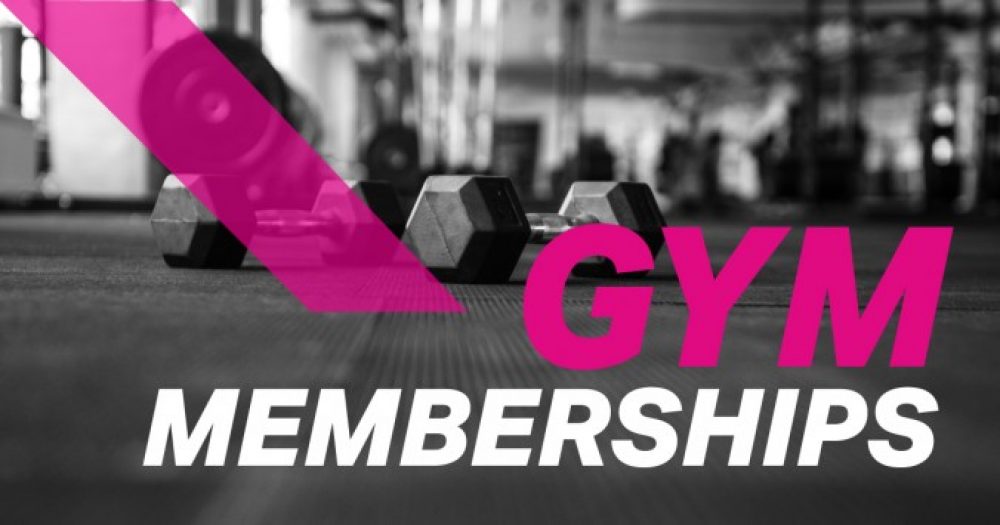
Many Gyms Offer Different Payment Options
Most gyms are still run on a membership basis and many still prefer users to sign up to longer-term contracts (meaning committing to at least a year), after which contracts typically continue on a rolling basis for as long as the member wishes. These days, however, many gyms now offer shorter-term memberships and quite a few offer pay-as-you options. Generally speaking, committing to a longer-term membership will get you a lower price, but obviously short-term and PAYG options offer more flexibility.
Any Decent Gym Should Let You Use the Facilities Before Signing Up
Many gyms will let you trial their facilities before committing to membership and/or agree that you can cancel your membership within a certain period of time, no questions asked. As an absolute minimum, they should at least let you tour the place before signing up. Strike any gym which doesn’t allow this.
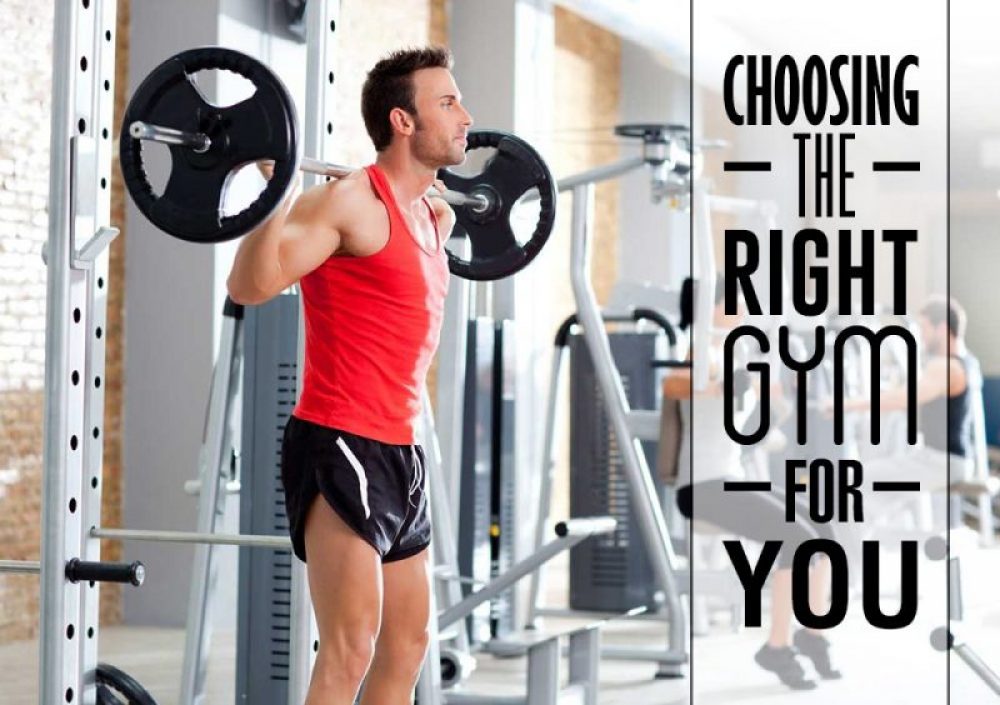
Choosing the Right Gym for You
There’s a gym for everyone, you just have to find it. Here are some points to check.
What do you actually want from a gym?
Before you hit the search box, ask yourself what it is exactly you want from a gym. It’s all very well saying you want to lose weight (or whatever your goal is) but what’s your preferred method for achieving that? Do you fancy classes and if so what sort? Do you fancy weights and if so are you happy to stick with machines or do you also want free weights? Are you the sort of person who’ll stick to the same routine(s) or do you need variety to keep you from getting bored?
Pro tip - when it comes to buying decisions, we usually suggest putting needs over wants, but gyms are different. You need to want to go to a gym or else you won’t go and you’ll have wasted your money (and be missing out on a chance to get fit). In this one case, we suggest you start with your wants and then think about your needs.
What are your practical must-haves?
Now that you have a decent idea of what sort of exercise options you want, it’s time to think about what sort of practical facilities you’ll need. For example, realistically are you actually going to make the effort to travel to a gym and if so how are you going to travel? If you’re planning on going by car or bike, then you’ll want to think about parking/storage. You want to create a sweat with your workout not because you’re worried about going back to an empty space where your wheels should have been.
Pro tip - even if you honestly think you will make the effort to travel to a gym, start by looking at your local options, including checking for ones you might not have known about before. It’s amazing how many gyms are tucked into places other businesses have overlooked and these often tend to be places which do very little proper advertising, they get business mostly through word-of-mouth recommendations. Try looking for all gyms within five miles of your home/work and seeing if you can find a suitable local option.
What kind of person are you?
Think, honestly, about the kind of person you are. Going to the gym will help you get (or stay) fit but it won’t make you more organized, so if you’re the kind of person who always forgot at least part of your gym kit at school, it might be a good idea to look for a gym which supplies the likes of toiletries and towels (and any other bits and pieces you tend to forget).
Pro tip - think about your lifestyle, both now and in the foreseeable future. If you know that, realistically, you’re only going to be able to go to the gym sporadically, you might want to look for a place where you can buy short-term membership or PAYG when you have the time.

Checking Out The Gym
Once you’ve created a list of possible gyms, it’s time to visit them in person. We’ve already said it and generally we try to avoid repeating ourselves, but, just this once, never sign up to a gym without checking it out in person.
That said, here’s some tips as to what to check.
How safe do you feel about actually getting to the gym?
The only way you’ll know this for sure is to go there personally (obviously, back out if you really don’t feel safe). As a minimum you want to visit when you are most likely to go and if possible you want to go at opening time and closing time as well, just to get a feel for how it is at quieter periods.
How does the gym look from the outside?
Gym staff aren’t responsible for the state of the streets (although they should make the effort to keep the entrance to the building as clean and tidy as reasonably possible), but they are responsible for making sure that their premises are kept in good order. After all, if they can’t make the outside look decent, why should people check out the inside?
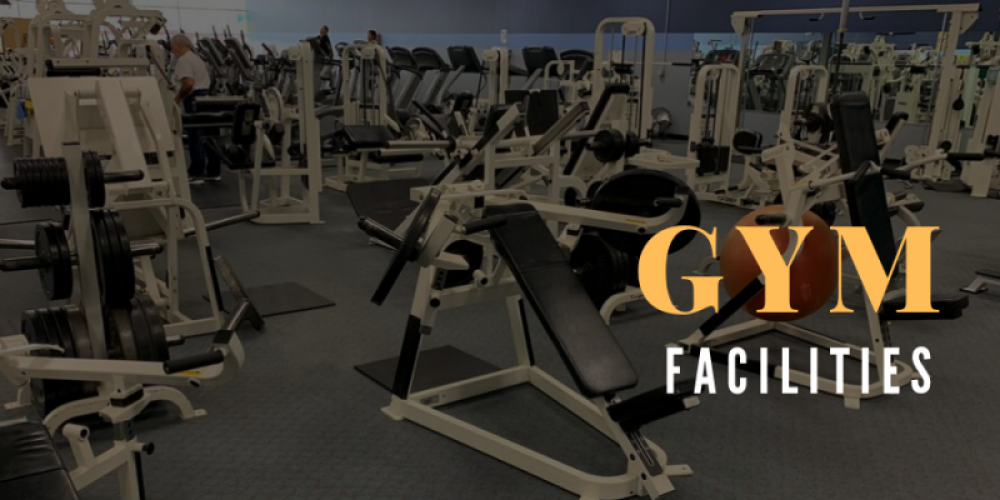
Check out the facilities inside
Ideally, you want to tour a gym at least three times, once when you’re likely to use it, once when it’s really busy and once when it’s empty. You’re basically looking for four things.
- Range of facilities
- Quality of facilities
- Cleanliness
- Culture
Range of facilities
You should already have a good idea what to expect in terms of range of facilities, you’re just double-checking to make sure your information is correct. If it’s not, then check with staff and see if there is a legitimate explanation for the discrepancy.
Quality of facilities
What really matters is that what a gym does it does well. For example, it doesn’t have to offer a huge range of classes, but it does have to have instructors who know what they’re doing and it does have to have decent facilities. For example, if it’s offering spin classes then the bikes need to be far enough apart for users to have a reasonable degree of personal space. If it’s hosting dance classes or yoga then studios with mirrors are a definite plus.
If you’re into weights then think carefully about whether or not you’ll really be happy with just machines. Some people are but if you want to do free weights then you’ll need a space for it and how about bodyweight workouts or foam rolling? If you’d be interested in those then you’ll need a space for them too and frankly that will probably narrow down your options a bit. If you’re interested in a gym which doesn’t have space for free weights, look for at least some cable machines for more variety.
We’ll explain machines versus cable machines versus free weights in the “Getting started with weight training” section.
Quality of facilities
What really matters is that what a gym does it does well. For example, it doesn’t have to offer a huge range of classes, but it does have to have instructors who know what they’re doing and it does have to have decent facilities. For example, if it’s offering spin classes then the bikes need to be far enough apart for users to have a reasonable degree of personal space. If it’s hosting dance classes or yoga then studios with mirrors are a definite plus.
If you’re into weights then think carefully about whether or not you’ll really be happy with just machines. Some people are but if you want to do free weights then you’ll need a space for it and how about bodyweight workouts or foam rolling? If you’d be interested in those then you’ll need a space for them too and frankly that will probably narrow down your options a bit. If you’re interested in a gym which doesn’t have space for free weights, look for at least some cable machines for more variety.
We’ll explain machines versus cable machines versus free weights in the “Getting started with weight training” section.
Pro tip
Gyms which are picking the best machines in each category will typically wind up with a range of machines from different brands. If you see that most of the machines are from the same brand, there’s a distinct possibility that the gym is just buying in bulk to get a good deal. Ask the staff about why those machines were bought and also when they were bought and when they’re due to be upgraded.
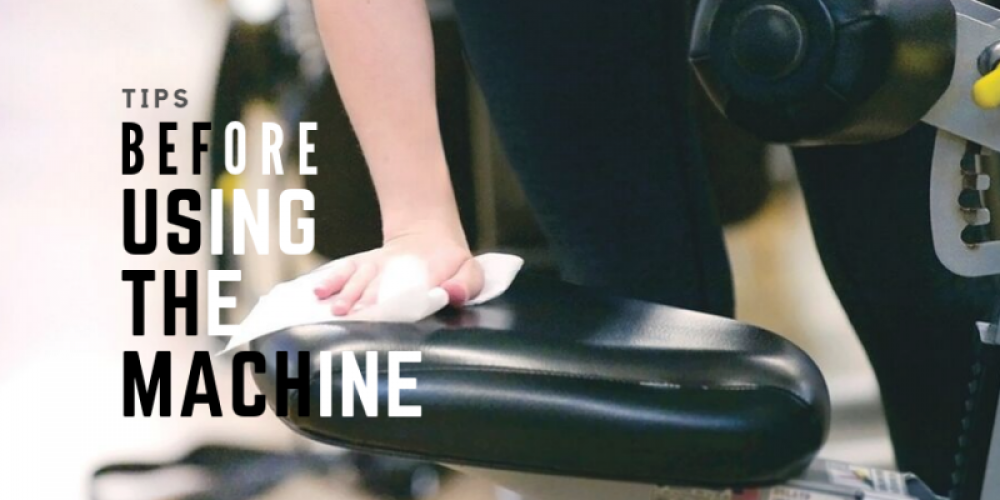
Cleanliness
Even the best gyms can have a bit of a sweaty smell in the changing rooms, but even budget gyms should be keeping these clean. They should also be keeping their machines clean. Ideally they should be wiped down after each use and if the onus is on the users to do this then check how effective the enforcement is (or make a note to wipe machines yourself before you use them). Machines (and facilities) should be properly deep cleaned at least once a day. Again, ask about this (and sniff).
Culture
Gyms basically compete with each other on four criteria - location, facilities, price/value and culture. For culture, you can also read style, vibe or, if you like, personality. For some people, this is totally irrelevant, they just want to work out and go home, for others, it’s the main reason they go to the gym rather than working out at home (or not at all).
Only you can decide how important gym culture is to you, but one point most people should probably check is what music is played and at what volume (this can vary throughout the day). If it isn’t to your liking you can either move on or come prepared with an alternative.
Pro tip - if you’re going to use noise-cancelling headphones at a gym, keep an eye on what’s going on around you, gyms sometimes need to make announcements over a tannoy and there’s always the possibility of a fire alarm, neither of which you will be able to hear if your headphones are doing their job. If there’s a fire alarm someone will check the building has been emptied but do you really want to be the last person in the gym being dragged out by a member of staff?

If You’re Happy with All of That, Then Check the Fine Print
There’s still a few more points to check before you sign up.
Ask about its emergency preparedness
All gyms must have a first-aid kit (and at least one person who knows how to use it), you ideally want them to have a defibrillator as well. You also want to know their process for emergency evacuation e.g. in the event of a fire. For example, if you’re in your work-out clothes and have to leave without changing, can they give you a blanket?
Ask about any partnership arrangements
Does your membership give you access to any other gym or any other benefits? It never hurts to check.
Double-Check the Contract and Get Any Clarifications in Writing
This one’s not just for gyms, but it still applies. Read the contract properly, ask any questions you need to and get the answers in writing. Basically make sure you’re completely happy before you sign on that dotted line.
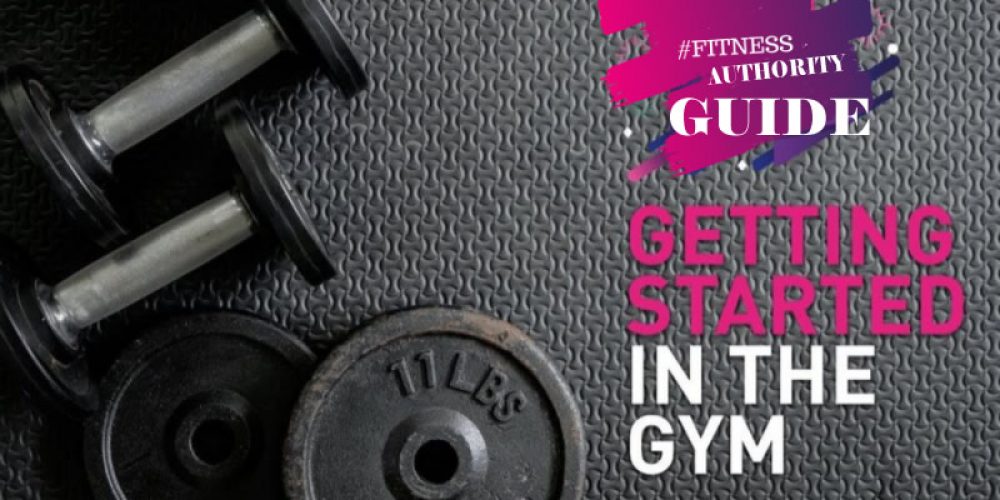
Getting Started at the Gym
So now you have your shiny new gym membership. All you have to do is use it. Here are some tips as to how to get yourself from being a member to being an actual, genuine gym goer.
Use the clothes and equipment you (probably) have already
All you need is some clothes you can move in, a pair of clean trainers and, for ladies, a really good sports bra. It’s a good idea to bring a water bottle and sweat towel, a regular hand towel will do just fine.
Set goals for yourself but make sure they’re measurable and achievable
You can try setting three goals for yourself, a main goal, a reserve goal (i.e. an easier one) and a stretch goal (pushing yourself to the max). All of them, however, should be achievable and you need some way to measure them. This could be anything from taking regular selfies, to trying on clothes which are too small for you to weighing and measuring yourself regularly.
Pro tip - it may help to focus on something other than weight loss and/or muscle gain. If you do want to focus on weight loss, remember that your genetics will determine where you lose the fat first. In other words, you may want to get slimmer thighs but your body may decide that belly fat is its first target and you’ll just have to live with this. Your body will get around to your thighs in its own time.
Speaking of which...
Schedule time to go to the gym
In other words, eliminate an excuse for not going
Do it for you, because you want to
This is probably the biggest tip there is. You need to decide for yourself what you, personally, want from the gym and keep that motivation in mind. If you just go because you think you should or to please someone else, it’ll feel like a sacrifice and that’s not a good foundation for getting meaningful, sustainable results.
Remember that sustainable changes take time
Going on a fitness kick is like going on a crash diet. It might get you the results you want quickly, but you won’t be able to maintain the regime forever and, although, in theory, you could ease of gradually and maintain your gains (or losses), in the real world, you’ll probably wind up right back where you started only more miserable than you were before.
It’s one of the world’s oldest cliches but slow and steady really does win the race. Making the gym work for you means going regularly and accepting that progress will take time and will often involve setbacks along the way, some of which may come from outside the gym (like the quick pint after work which turned into a pub crawl followed by a take away). Life happens, sometimes you stumble, just pick yourself up and get moving again, even if you have to move more slowly than you did before.

Getting Started in Fitness
Fitness classes are led by an instructor and are usually delivered in groups, sometimes fairly (or very) large ones. Even if you’re a member, you may have to book classes as there will be a limit to how many people can safely participate. In most gyms, long-standing classes will probably have a high percentage of regular attendees who know what they’re doing and probably know the instructor. They were all beginners once too and if you stick in you can get where they are.
Aim to arrive early if possible (and at least on time)
This holds true for all classes but most especially for anything involving equipment as you may have to get someone to show you where it is and possibly how to set it up. It’s most true of spin classes as these tend to be very busy and you will want to do your level best to grab a bike at (or at least near) the front, i.e. close to the instructor.
Make sure you can see and hear the instructor
As a beginner, make sure you can see and hear the instructor, although for larger classes/rooms they will generally use a mic.
If an instructor asks whether anyone is a beginner, make sure you tell them you are
In smaller classes which are mostly filled with regulars, instructors may be able to spot new faces and estimate their level of fitness. In larger classes, however, they may make a point of checking and it’s important to let them know so they are aware they need to provide an “easy” option.
Try to find your own space in the room
How important this is will depend on the class, but basically if you’re going to be moving about, you want to avoid being in anyone else’s way. The instructor may move people around to prevent this, e.g. keeping the slower beginners at the front and the regulars at the back but they will only know to do this if they know you’re there.
Take the cool-down period seriously
Resist the temptation just to flake out, there’s a reason for those post-exercise stretches and if you neglect them you’ll find that out the hard (and painful) way.
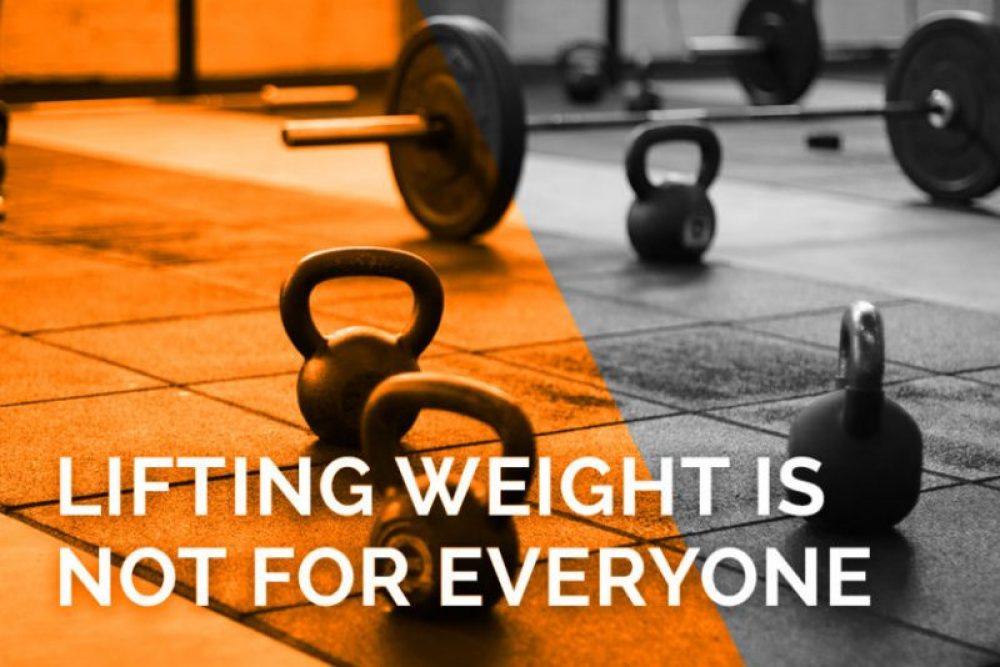
Getting Started with Weight Training
Any gym which offers weights (i.e. just about all of them), will offer standard machines. Standard machines are all about holding one position while you perform a specific motion, usually pushing or pulling a lever.
Some gyms will also offer free weights, which are exactly what they say. These are weights you literally pick up in your hand and move as you choose.
Cable machines split the difference in that they are machines, but they use pulley systems instead of levers, so they offer more of a range of movement. Essentially they split the difference between standard machines and free weights.
Some gyms run induction sessions and some have periods during which you’re guaranteed an instructor on site to help you with the equipment. In general, however, weights are something you do largely on your own and your main source of help, if you need it, will be other gym goers.
***The golden rule of weights is to be clear about what you need to do before you try to do it and if in doubt ask someone else.***
Note to ladies
Ignore anyone who tries to convince you that doing waits will make you look like the incredible hulkette. It won’t. You can push for muscle bulk if you want to, for example, if you’re into bodybuilding, but you are not going to wind up looking like the female answer to the Hulk.
You need to organize your own warm-up and cool-down
In a fitness class an instructor will guide you through a warm-up and cool-down, with weights you’re on your own. You’re going to be working your muscles hard so prep them properly and give them some proper recovery time at the end.
Appreciate the importance of your recovery periods
The basic idea of weight training is that you stress your body, then you allow it to recover, then you stress it again, maybe a little harder, maybe not (depending on whether you need to progress towards your goals or to maintain your gains). Those recovery periods matter and if you cut back on them, the least you can expect is muscle pain and you’re really opening yourself up to injury. REMEMBER muscle only grows while it is resting

In the early days, focus on eating healthily and ignore supplements
If you continue in your training, then you may want to start looking at supplements, but in the early days, you can essentially ignore them as long as you’re eating a healthy, balanced diet. The one, possible, exception to this is that you might want a post-work-out protein shake (or snack) as protein is very filling so you could satisfy the appetite you’ve worked up in a quick, convenient and healthy way and potentially help build muscle mass at the same time.
Try out the free weights
Free weights can look intimidating and frankly there is a bit of a learning curve with them. You may want to book a session with a trainer or start trying them out when there are more experienced gym goers to help (generally speaking they’ll be quite happy to). Once you get the hang of them, however, you’ll understand why serious gym goers love them.
- First of all, they make you work on your balance. You won’t have a seat or a bench to hold you steady, you’ll need to use your own muscles.
- Secondly, they support a much broader range of movement, so you can work more muscles in less time and/or work muscle groups the machines just can’t reach including the tiniest groups of muscles you never knew you had.
- Thirdly, knowing how to use free weights means you can exercise when the machines are busy.
Mix it up with floor exercises and skipping
We know that if you’d wanted to do an exercise class, you’d have signed up for an exercise class in the first place, but floor exercises and skipping are both a form of weight training, they just use your bodyweight (and the rope handles) instead of standard weights and they both offer much the same benefits as free weights, plus skipping can add some serious cardio.
By the way, we were serious about the skipping rope handles being mini weights. The faster you move them, the heavier they will feel and the more of an upper-body work-out you’ll get. That’s physics for you!
A Final Point
Hopefully going to the gym will be a starting point for any other health-related changes you need to make in your life, but make your changes one at a time. For example, going to the gym, cutting back on alcohol (and caffeine) and giving up smoking are all excellent life decisions, but if you try to do them all at once, you could wind up making yourself very miserable. Stick to one at a time!
Jeff is a medium-sized private gym owner that has itself over 100 members and is our equipment reviewer. If it builds muscle, gets you fit or pretends to be healthy, Jeff knows all about it. Worked with Fitness Superstore as a buyer for 10 years. Seriously BIG guy with a heart to match. Always laughing and looking for a windup. Literally always eating

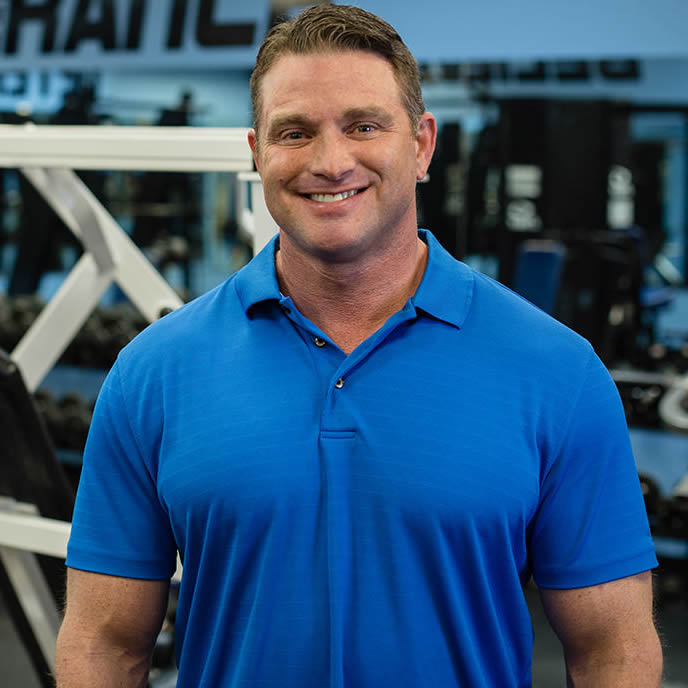
![How to Get into the Gym – Exercise and Weights [EXPERT GUIDE]](https://fitnessauthority.co.uk/wp-content/uploads/thumbs_dir/How-to-Get-Into-Netball-Feature-Image-omsphdcy6cvtjwqpckvw31kunu45pxgvgmj8oec7r0.jpg)
![How to Get into the Gym – Exercise and Weights [EXPERT GUIDE]](https://fitnessauthority.co.uk/wp-content/uploads/thumbs_dir/How-to-Get-into-Football-omspdrn7z7y91pz4e0tdiyb8onvi7p5wysi8g7ojlo.jpg)


![Best Home Gym Mirror – [Full Buyer’s Guide & Review]](https://fitnessauthority.co.uk/wp-content/uploads/2021/04/Best-Home-Gym-Mirror-800x400-1.jpg)



